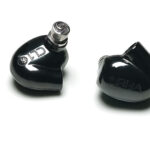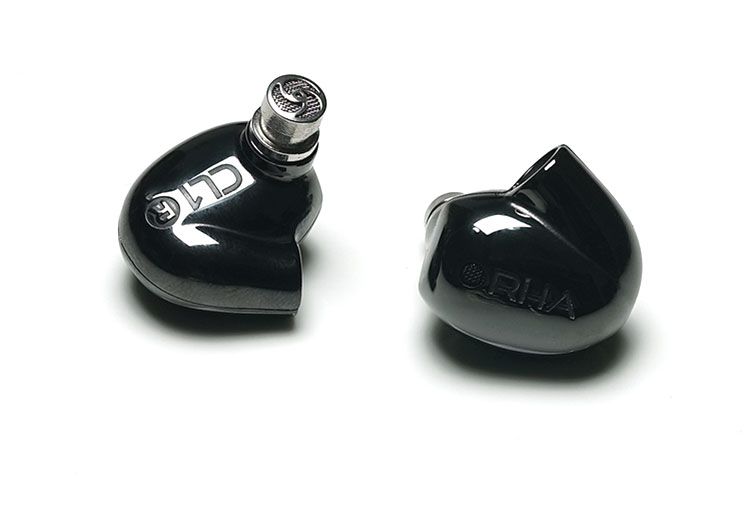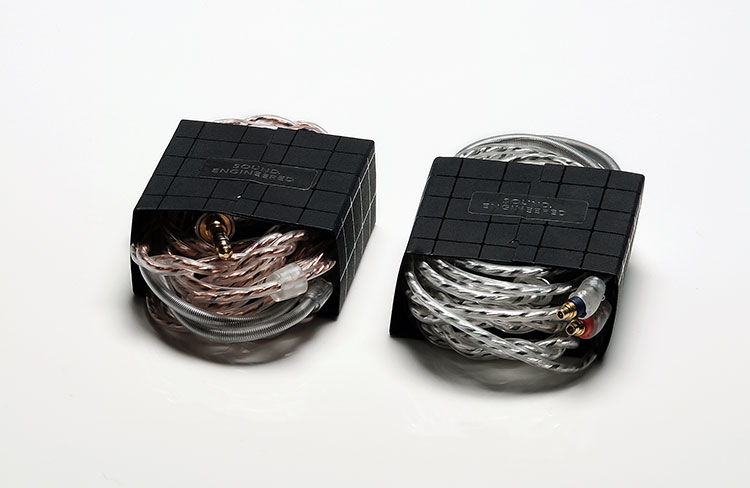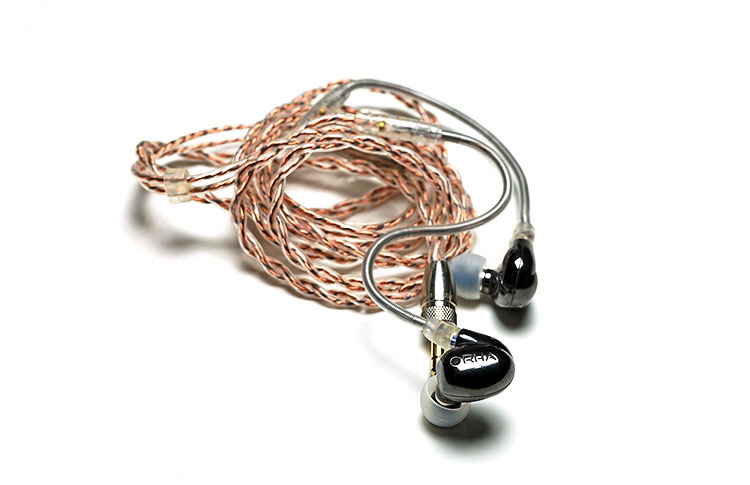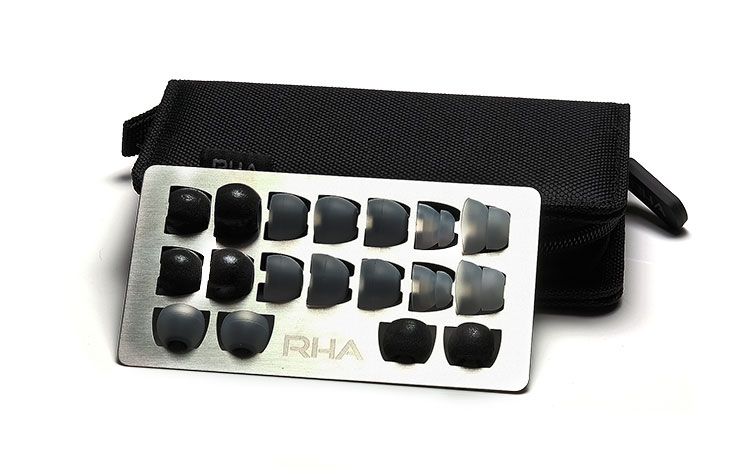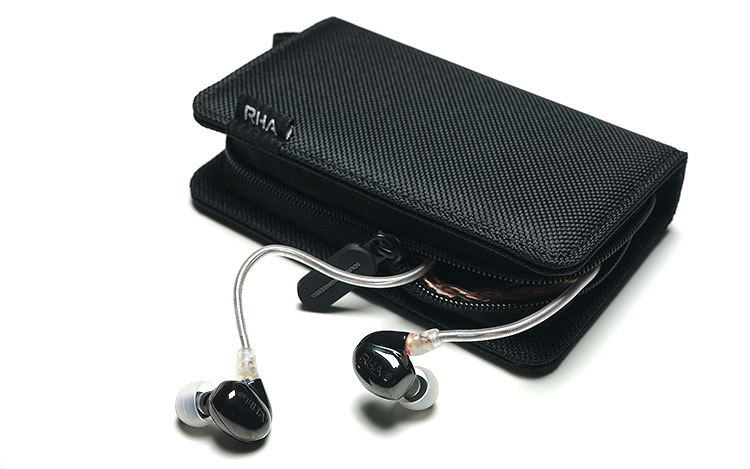The RHA CL1 is a dual-transducer dynamic driver with a ceramic plate universal IEM with detachable balanced cables. It is priced at $549.95.
Disclaimer: The RHA CL1 was sent to us as a discounted sample in exchange for our honest opinion in this review. We thank RHA for this opportunity.
To learn more about RHA products on Headfonics you can click here.
Note, this 2-page review follows our new scoring guidelines for 2020 which you can read up on here.
Marmite. There I said it and for those that have tasted this “delicacy” will know exactly what I mean by that term because the RHA CL1 is exactly that in a more enticing wrapper. Truth be told this is the review I have been looking forward to the most for Q1 2017 simply because it is not a vanilla sound and neither is it a “me too” IEM.
It is unique, it’s certainly bold in intention, but at times it will also drive you up the wall in some sort of ‘faux frustration’ and then before you know it you will be sneaking back for a little more.
It also represents, well for me, a sort of RHA re-born in terms of what they want to do with their sound and where they perceive themselves to be in the long term. For all the caveats that the CL1 brings with it, and there are a few, I personally think the $549.95 CL1 should be heard, it should be quarreled over and most importantly of all, you should take your time with it before you come to any considered conclusion.
I can’t say for sure you will like it or not, so much will come down to personal preference but I put $10 down that you will not forget it in a hurry.
What Is The Pitch?
Flagship Needs
The CL1 is the flagship of RHA’s new CL series of IEMs which are pitched to be a bit more specialist in use and appeal than the rest of their line-up.
Along with the cheaper CL750, both are being sold as IEM’s with a sonic reproduction best realized through amplifiers, and the specs of the CL1 would suggest this to be the case coming in at a whopping 150-ohms and 89dB sensitivity rating.
Old School
That is not the stuff of pure smartphone dreams and frankly bucks the trend of ever-increasing efficiency by other companies seeking to widen their appeal beyond the typical audiophile world. Yes, RHA is going hardcore when everyone else is thinking “Made for iPod”.
Guilt By Association
This is going to appeal to dudes and dudettes with a ‘stack’, that DAP/smartphone with an amp and rubber bands galore.
As if to hammer that home RHA has actually released an accompanying DAC/Amp called the DACAMP L1 specifically designed to maximize the potential of the CL1’s power needs through a balanced design. Yes, you can use it with almost anything else but the secret sauce we are told is the CL1 with the L1 in tandem.
Balanced
To hammer this association into stone RHA are pitching the CL1 in balanced mode also. Not 2.5mm TRRS sadly, that would have been the dream ticket, but with a mini-XLR optional cable that slots in perfectly into the mini-XLR slot of the DACAMP L1.
Since the CL1 comes with that balanced cable as standard you will be hard-pressed not to ponder the buy it now option on the L1 amp page on the basis of “what if?”.
Build
Ceramics
They did it before with the T10 and T20 range bringing in a dual coil design and once again with the CL1 RHA have brought in some new tech to help bring everything to life. At the heart is the use of a dual transducer config of a dedicated driver for everything sub 8k (bass and mids) and a ceramic plate with crossover for everything post 8k meaning the top end of the frequency range.
It’s not just ceramics on the inside but also on the outside with the CL1 made from a 2-piece injection-molded ZrO2 ceramic housing which I have seen used before commercially by none other than Campfire Audio and the initial roll out of their first-generation top of the line IEM’s last year.
RHA claims that this process will kill distortion with low resonance and keep everything rather durable in the process.
Form Factor
The CL1 shares a very similar design philosophy to the previous T-series, differing primarily in weight, size, and color (shimmering black). In the hand, they are not quite as solid feeling as the T10 or T20 but they are much lighter, in fact by over 50% in comparison weighing in at a tiny 14g (without cables) compared to the T20’s rather portly 41g.
They are also significantly smaller than either of the T -series injection-molded steel drivers. Much of that is to do with the use of ceramics which is much lighter in density than a solid chunk of molded stainless steel.
Finishing
On the front, the CL1 is etched with the RHA logo right before the discreet bass port for the dynamic driver and on the inside, you have the CL1 moniker right beside a fairly visible r/l designation letter.
I am pretty sure RHA have used an adaptation of their old filter system from the T20 to finish off the nozzle on the CL1 also though instead of screwing it off it’s an integrated part of the more refined-looking CL1 design.
Connectors
Since the CL1 is designed to be worn over the ear the design curves out to the top for RHA’s proprietary designed sMMCX connectors which are slightly recessed making it fairly non-negotiable for any other aftermarket cable other than the ones RHA supply you with out of the box.
Cables
Thankfully RHA has not gimped the CL1 proprietary connection system with cheap cables. The two accompanying cables are in fact excellent cables and worthy of being aftermarket cables in their own right and will bring 2 distinct tonal and performance characteristics due to their materials and terminations.
Unbalanced
The first cable, the unbalanced version, is a braided high-purity OFC cable with fairly heavy-duty gold plated 3.5mm straight jack termination and branded screw-on quarter jack adapter also gold plated. These are coated in a TPE and are incredibly soft, pliant, and easy to work with.
They have zero memory retention and microphonics. This cable is also finished with RHA’s excellent coiled memory wire for hooking around the ear with supreme ease and comes with a very attractive metal tube y-split and plastic chin strap.
Balanced
The second cable is actually very similar in design to the unbalanced version with TPE coating, memory coils, and y-split/chin strap materials.
However, this time it is composed of a silver core Ag4x balanced cable with 4pin Mini XLR termination intended to be primarily for use with their own Dacamp L1. It has the same physical properties as the first cable, the same level of comfort, and also designed to be worn over the ear.
Fit & Seal
With the new sized ceramic driver units combined with the patented memory coils, the CL1 is a very comfortable and steady fit for a universal IEM. Much will depend on the tips you use both in terms of isolation and canal comfort. RHA has always supplied an excellent selection of tips and the CL1 is no different with no less than 4 different types of tips in the box. These include:
- 1 x s/m/l wide single bore silicone tips
- 1 x s/m/l narrow single bore silicone tips
- 1 x l/m dual flange silicone tips
- 1 x l/m/s Comply foam tips
As before all of these tips can be mounted in their stainless steel tip holder tray which also fits rather nicely onto one side of the carry case though I am not entirely sure if that is the intended outcome, however, it works nevertheless.
Tip Preference
With the Comply tips, I get the best seal and the ideal level of comfort. This tip pairing is just perfect and they really have not come off the CL1 so the majority of the sound impressions have been formed with these in use.
They do well with the CL1 treble peaks, more so than the silicone tips whose seal is a little lower but also really allow the treble to come much more to the fore which was less to my liking.
Accessories & Packaging
Legacy
RHA has bunged the CL1 package with accessories aplenty, more so than any other IEM they have released to date. Yet at the same time, despite the elaborate layering of bits and pieces in the box a lot of it is legacy and familiar to RHA fans.
Contents
You have the traditional excellent zip case with RHA moniker, only this time instead of faux leather you have a tougher nylon finish and perhaps a shade deeper.
You also have the tips tray as before, only this time its tip organization is a little more elaborate and the tips come prepacked in vacuum-sealed bags, pair by pair. The twin cables are neatly coiled into their own sleeve holds. There is a lovely colored booklet on the CL1 as well as a cleaning cloth, shirt clip, and warranty card.
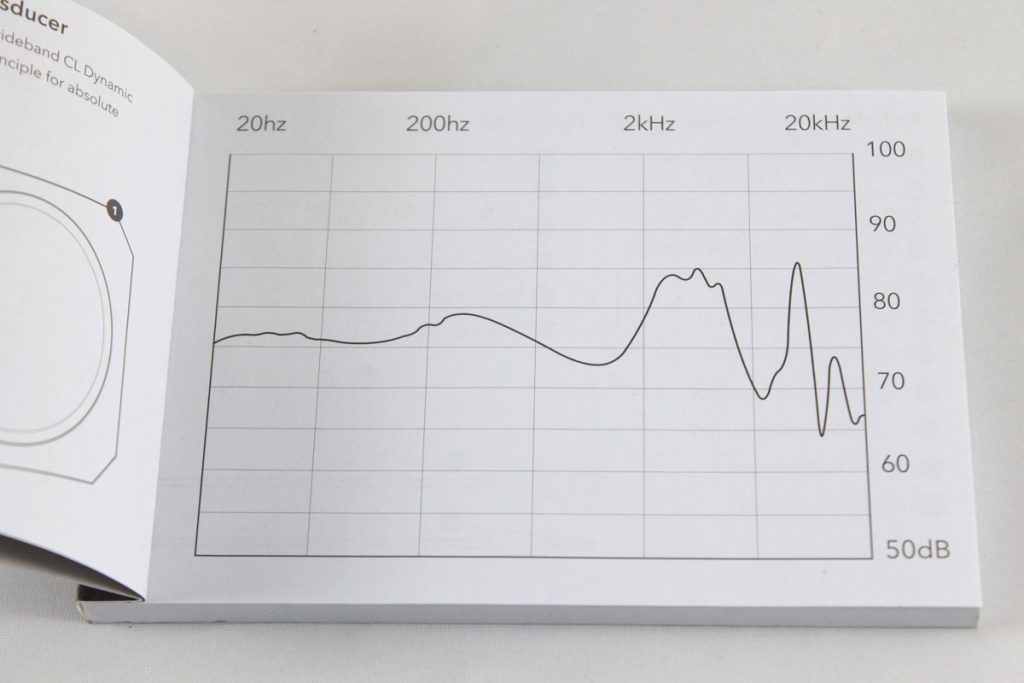
Manual
Perhaps the most interesting inclusion is the manual. This is not just a 3 pager of the usual diatribe of ‘listening with care’, maintenance guidelines, and ‘don’t leave in molten hot lava as it may melt’ but rather it also includes a more precise frequency response chart (compared to the one at the back of the retail packaging) that is worth studying before you start listening as it is a rather accurate reflection of the performance of the CL1.
Sound Impressions
Tonality & Presentation
Emphasis
The CL1 is not quite a v-shaped presentation, it’s a bit more complex than that simple phrase but it does have a lower midrange that falls away quite markedly and a fairly singular if slightly plateaued presence region that comes across as perceptibly articulate and forward but also quite sharp and edgy if pushed too hard.
I would also hesitate to give it a general tonal temperature because there is a bit of a mix in the curve. The initial reaction will be north of neutral but on more considered listening you will get some low-end warmth, a thin and recessed low to midrange, and yes, a forward and dominant treble response giving you that brightness and top-end energy.
The bass performance of the CL has some interesting coloration with elevated sub-bass then another even more elevated mid-bass which drops off pretty quick by almost 10dB into that recessed lower midrange. There is some fairly extensive energy also in the CL1’s final octave to give an impression of huge extension and headroom. That ceramic plate really makes its presence known.
As a result of the mids positioning and that emphasis on extension and presence on either end of the CL1 its presents a much better than average sense of space, depth and width. Even more striking is the CL1 driver capability for accurate imaging, producing accurate spatial cues even in complex presentations.
This is the kind of tonal presentation with an eye for detail and whilst I would not term the sound as analytical I do find the level of resolving capability of the CL1 to be very good indeed.
Musical?
Can you call it a musical presentation? No, it’s more engaging than that as I always find the word musical to be more of an easy-going term for low to midrange coloration and relaxed highs.
The CL1 is more colored by its top end and that’s where the marmite comparison comes in because let’s be frank there are more people who find a solid bass response to be preferable to a solid treble performance.
Given the wrong set-up, the wrong genre, and maybe the wrong mood for today the CL1 can be spiky, testy, and challenging. Find the right setup, the right selection of music, and the tonality can suddenly become detailed, dynamic, and very absorbing.
Bass
The CL1 has plenty of bass presence but it is not uniformly elevated. It has two kicks in its rear end so to speak, with one minor elevation in its sub-bass region extending into the lower part of its mid-bass signature giving it a nice sense of power.
RHA has declined to focus the majority of the CL1 low energy here though. They have also boosted the midbass midrange to provide a sense of impact to go alongside the more than decent sub-bass presence.
It is that elevation that also gives the CL1 its low-end warmth, some good fundamentals in lower instrumental passages as well as leaving enough room for the rapid dip into the mids to prevent any bass bleed and keep a strong sense of clarity throughout.
Neither is the low-end a plodder on the CL1. RHA has chosen wisely with its dynamic driver injecting just the right balance of body into the note with a decent attack and a decay that doesn’t really linger. It’s not as quick-paced as a BA design but it sounds a lot more natural with excellent detail and texture as well as thankfully avoiding being overly dominant.
Mids
There is nothing really overly neutral with the CL1 midrange with a fairly large drop from 350Hz to around 1k and then a pretty quick rise again from 2k right up to around 8k.
Some higher vocal pitching, probably some alto most likely all soprano will be caught in that increase in energy or the final octave of the CL1’s dynamic driver and will come out stronger, clearer but also perhaps more sibilant and sharper sounding depending on the recording. It is a fine balancing act but when it is ‘on song’ these vocals can sound incredibly good.
Instrumental positioning though will fall a bit behind, as will some Baritone and Tenor pitches further down the frequency response. These could struggle to stand out as much as alto or soprano though far more often they will sound smoother and a little more accurate in contrast.
Aside from that, the dip in the lower mids renders some instrumental timbre as sounding slightly thin and brittle in comparison. Some male vocals, the really low-end stuff like a bass pitch (Bass: E2–E4) might lack a little body also.
Certain instruments though will gain from this boosting from 2k upwards are percussive and rhythm instruments and this is likely what you will be drawn to first when listening to the CL1 if a source throws a ton of cymbal, hi-hat, and synth work.
It can get mighty distracting on high energy pop and rock and with a neutral source as this is where the perception of the CL1 being peaky or bright will start to creep in.
Treble
This is the dominant frequency of the CL1 and the one area that requires a studied selection of setup gear and source tracks to get just right. Much like the bass response, the CL1 treble has two particular areas of focus or elevation rather than one clear peak and the usual mini 12-13k mini “hifi” tail off on some competing IEMs. That tail off is much less pronounced on the CL1.
Overall the highest peak of the first focus area, right in the middle of the presence region around 4-5k is about 5-6dB higher than any other part of the frequency curve.
Yet it’s not a straight up and down peak, more stretched over the entire presence or lower treble region. This has the effect of producing a forward treble response that needs to be managed carefully. It can sound harsh and overly bright if pushed but if not it brings in a really strong perception of clarity and articulation which can pay off in bucket loads with the right track.
The ceramic plate kicking in post 8k also produces a more energetic post 10k to 12k response from the CL1 in contrast to quite a lot of other IEMs trailing off-post 10k with only a minor bump around 12k.
You do get that “hifi” sound from the CL1 but it not a token peak. If your hearing is top-notch you will appreciate that additional headroom on lower volumes. This response throws in a nice element of sparkle to the CL1 top-end response and plenty of air.
Click on page 2 below for Matching & Comparisons


